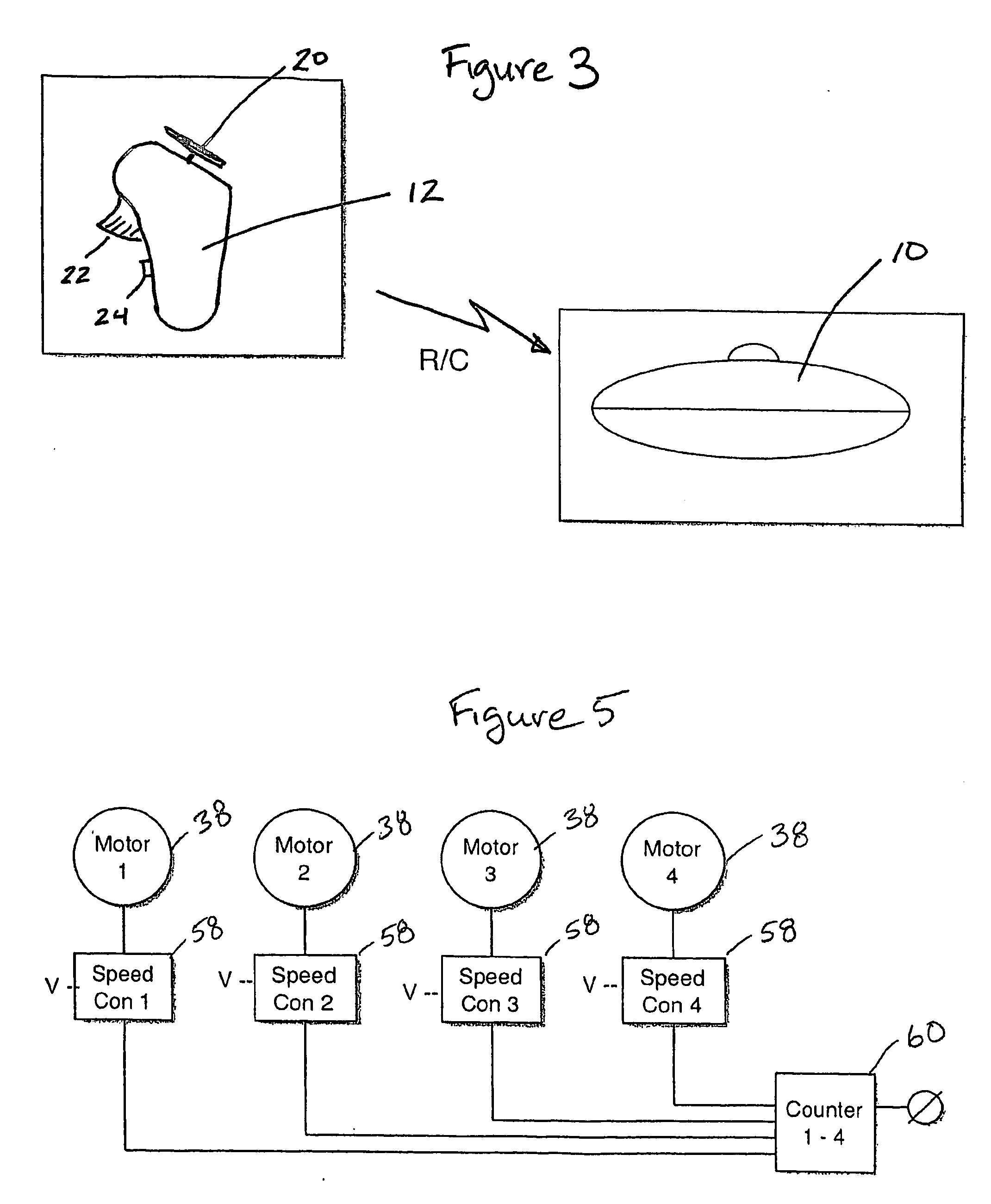While numerous concepts relating to
spinning, flying disc-shaped craft have been put forth in a variety of patents and publications, a practical embodiment of a self-powered flying
saucer has yet to be developed.
Even so, the difficulty in controlling and maneuvering such a VTOL aircraft on both take-offs and landings, as well as transitions from vertical to horizontal flight, continues to plague the general acceptance of VTOL aircraft as evidenced by the ongoing difficulties with the US Marine Corp's V-22 Osprey aircraft.
The problem with this arrangement is similar to the problems encountered with helicopters, namely the rotation of a single fan imparts a one-way spin or torque that must somehow be counteracted in order for the craft to remain stable.
As one might expect, the trickiest part of controlling this craft occurs during the transitions between vertical and horizontal orientations.
Currently available information indicates that the smaller OAV models of the Kestrel project are still not ready for use.
While this represents an improvement in terms of simplicity and
operability, model airplanes, and particularly model helicopters, are still expensive, complicated, temperamental and fragile hobby toys that can require months to build, learn, rebuild and master.
Unfortunately, each of these craft is still difficult to control and maneuver and all of these craft rely on multiple conventional helicopter rotors to provide
aerodynamic lift, rotors that are easily damaged in the event of a
crash.
Like all exposed rotor craft, these multi-rotor models are also inherently dangerous due to the exposed spinning rotors.
While the research is interesting, the project has no practical guidance on how to make a model-sized RC flying craft for here on Earth because of the differences in gravity and air density as compared to Mars.
Although his design proposed the use of counter-rotating ducted fans to power the craft, he has never been able to make the design work.
While some interesting concepts were proposed, a workable prototype was never achieved and no further work on the project has been reported.
Whether the craft is a single-axis VTOL, ducted fan UAV or OAV, a multi-rotor model RC craft, or a multiple ducted fan craft, the main challenges with all of the existing designs for fluid sustained aircraft are ease of control and stability of flight.
Manually flying any of these craft requires extensive training and skills.
Unfortunately, the automated self-piloting systems capable of attempting to assist with flying any of these craft are all based on the complicated and expensive inertial guidance auto-
pilot systems used in airplanes today.
This complicated referencing to a static
ground plane reference can be augmented dynamically by obtaining positional information from a global positioning
satellite (GPS)
system, but GPS systems are not precise enough to detect small changes in attitude of a craft on a continual basis.
Unfortunately, mechanical sensors such as pendulums, gyros and piezo-accelerometers do not function the same in dynamic situations where the sensors are continually subjected to multiple acceleration fields.
This phenomenon is further complicated in situations where the craft is in a parabolic dive, for example, when the tilt of the craft is equal to the rate of acceleration of the dive.
In this situation, referred to as the “death spiral,” the forces on sensor are balanced so that the sensors typically give no useful output readings in this situation.
Still, if the
sensor system loses track of the state of the
sensor system, even this arrangement cannot dynamically determine an inertial gravitational reference to use as a reference.
 Login to View More
Login to View More  Login to View More
Login to View More 


